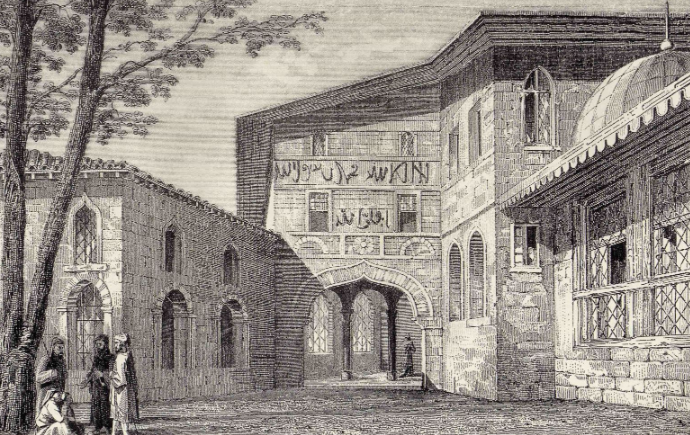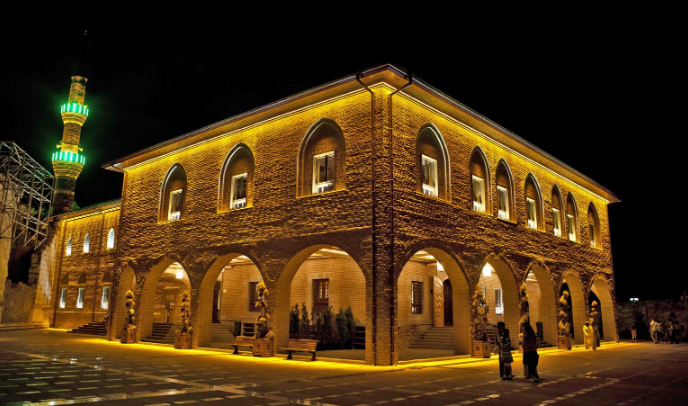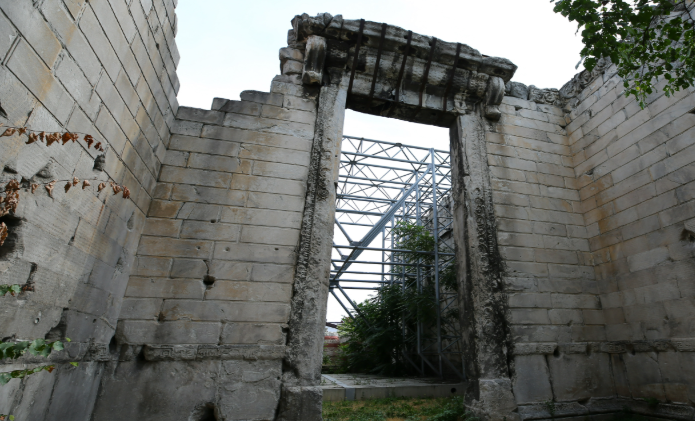The Hacı Bayram Veli Mosque is one of the most important religious and cultural structures in Ankara. Built in the 15th century, it stands out as both an architectural landmark and a spiritual symbol of the city. The mosque is named after Hacı Bayram Veli, the great Sufi who spread the understanding of mysticism in Anatolia. Today, it continues to serve both as a place of worship and a frequently visited pilgrimage site.

Hacı Bayram Veli Mosque (Türkiye Kültür Portalı)
Hacı Bayram Veli Mosque and Tomb
Hacı Bayram Veli’s mosque and tomb are among Ankara’s most important spiritual centers, located intertwined with the Augustus Temple. Construction of the mosque began in 1427 and was completed after Hacı Bayram Veli’s death. The Hacı Bayram Veli Mosque is located on Bayram Street, at Augustus Square. As an example of Ottoman-era architecture, the mosque has a stone base, brick walls, and a tiled roof. The mosque is adjacent to the Augustus Temple to the east and the Hacı Bayram Veli Tomb to the south. The building has a longitudinal rectangular plan.

Hacı Bayram Veli Mosque (Türkiye Kültür Portalı)
Mosque Architecture
The architecture of Hacı Bayram Veli Mosque reflects the characteristics of 15th-century Ottoman mosque architecture. Later additions were made to the north and west sides. On the southeast side, adjacent to the tomb wall, stands a minaret with a square stone base, cylindrical brick body, and two balconies. The materials and craftsmanship of the minaret reflect the period’s important features. The exterior walls of the mosque feature pointed-arch stone niches around the windows. In the last congregation area, on the south-facing wall, the inscription “Kelime-i Tevhid” is displayed.
Interior and Decorations
Inside, the mosque follows a single-nave plan. The wooden ceiling is coffered, decorated with various floral patterns and ornate moldings. Walls are covered with restored Kütahya tiles up to the top of the windows. The mihrab is made using plaster molding techniques and features a muqarnas niche. The niche is surrounded externally by a muqarnas frieze. On the mihrab panel, border decorations feature the inscription “Kelime-i Tevhid” repeated in nesih script.
Hacı Bayram Veli Tomb
The tomb is immediately south of the mosque, adjacent to the mihrab wall. It has an octagonal plan and a lead-covered dome. The interior features kalem işi decorations in yellow, orange, navy, and gray. The tomb is considered one of the examples of 15th-century Ankara tombs.
Augustus Temple
The Augustus Temple, located next to the Hacı Bayram Veli Mosque and Tomb, is an important structure from the Roman period. It was built between 25–20 BCE and dedicated to Roman Emperor Augustus. Its walls include inscriptions recording Augustus’ will, written in Latin and Greek. During the Byzantine period, the temple was converted into a church, and in the 15th century, it was used by the Seljuk Empire for the construction of Hacı Bayram Veli Mosque.

Augustus Temple (AA)


